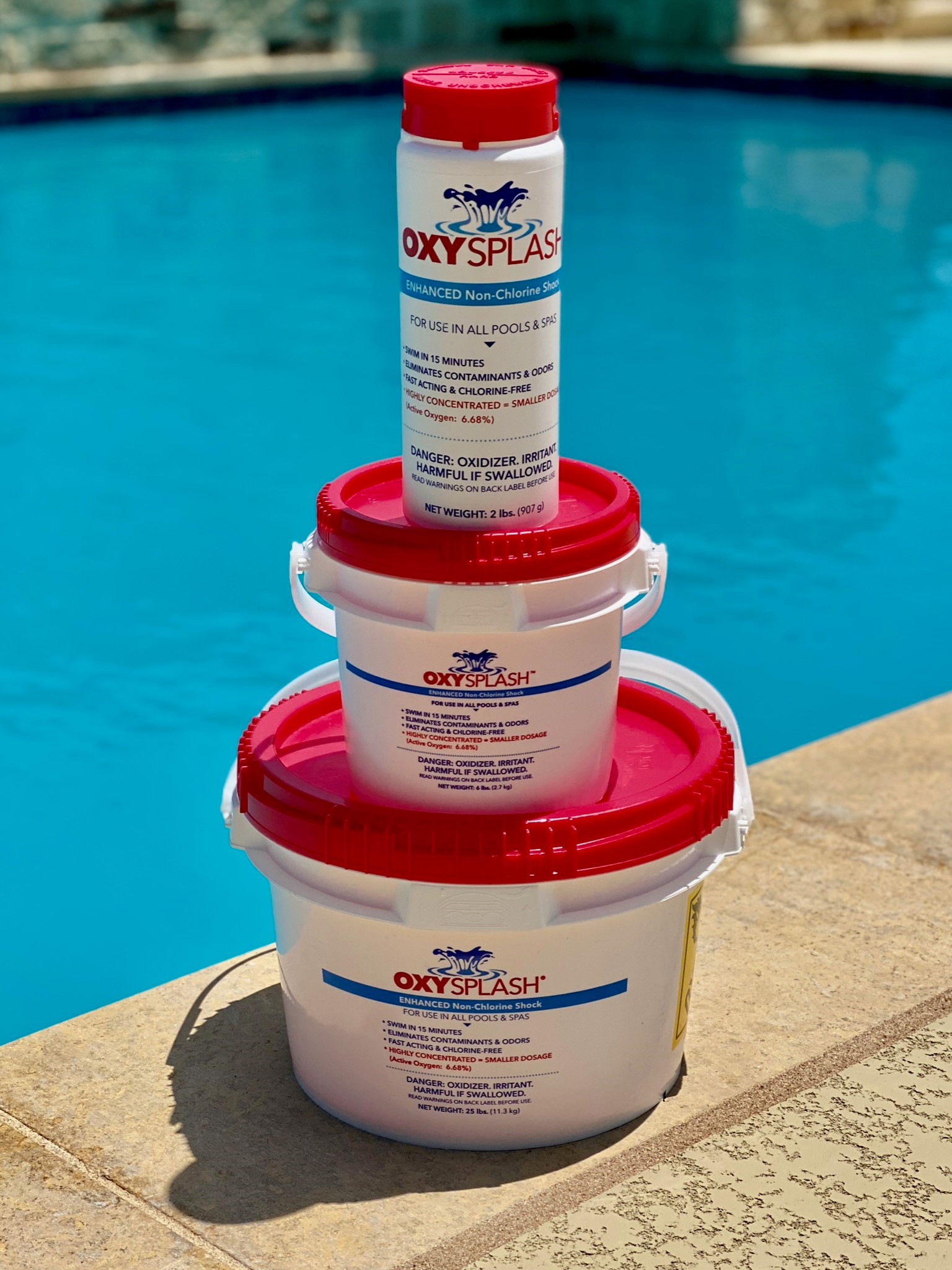Chlorine vs Non-Chlorine Shock
Let’s talk a little about chlorine shock vs non-chlorine shock (also called oxidizer). The first thing to know is that chlorine shock comes in many types and variations. There is liquid shock (sodium hypochlorite/bleach) and granular based versions such as dichlor, trichlor (dichlor and trichlor both contain cyanuric acid, more on this later) and calcium hypochlorite commonly known as cal-hypo. It is easy to see how all of this could be confusing!
Traditionally, pools and spas have been treated with chlorine based shocks, like those listed above, leading to the old pool industry adage of “chlorine, chlorine, and when there is a problem, add more chlorine”. Nowadays there are ever more popular products that can accomplish the same result without adding a whole bunch of chlorine. Non-chlorine products like Oxy Splash are oxygen based and can perform as well as or better than chlorinated shock oxidizers in many instances.
Non-chlorine shocks, have some clear advantages over chlorinated shocks. Non-chlorine shock is a granular product which does not need pre-dissolving; it can be dispersed directly over the water. A big benefit of using a non-chlorine shock is that you can swim within minutes of application. It is always great to not have to tell your kids they cannot swim until tomorrow!
Non-chlorine shock can eliminate chloramines (the “chlorine smell” which signifies an abundance of used chlorine in the body of water) without requiring very large amounts of chlorine. This can be a huge savings over traditional chlorine shock when calculating the amount of product needed to break down all of the contaminants. This is a huge advantage when chloramines are high!
High Cyanuric Acid (also called stabilizer or conditioner) levels do not affect non-chlorine shock like they can with chlorinated shock. If you have a high stabilizer reading, you should consider switching to a non-chlorine shock, like Oxy Splash. Another perk, non-chlorine shock will not bleach your pool or spa surface as other traditional chlorinated shocks may do.
You may be saying, “WOW! Why would I ever use a chlorine shock?!” The reason is that non-chlorine shock, like its name says, does not contain chlorine so it will not add chlorine to your pool. However, it will oxidize contaminants that use up your chlorine (this is called “chlorine demand”) which then makes your chlorine sanitizer tablets last longer and be more efficient. If your free chlorine levels are low and you need chlorine in the water right away, using a chlorinated shock product is your best bet. One other thing, if algae is present a chlorinated shock should be used; as strong and efficient as non-chlorine shocks, like Oxy Splash, are, they do not kill algae.
In summary, a non-chlorine shock can be used in most pools and spas to shock/oxidize out organic waste, used chlorine, and most other contaminants with less chemicals needed, and no swimming wait time all while making inherent sanitizer chlorine more efficient and longer lasting. If the pool has low chlorine or algae present a traditional chlorine shock/oxidizer should be used.










